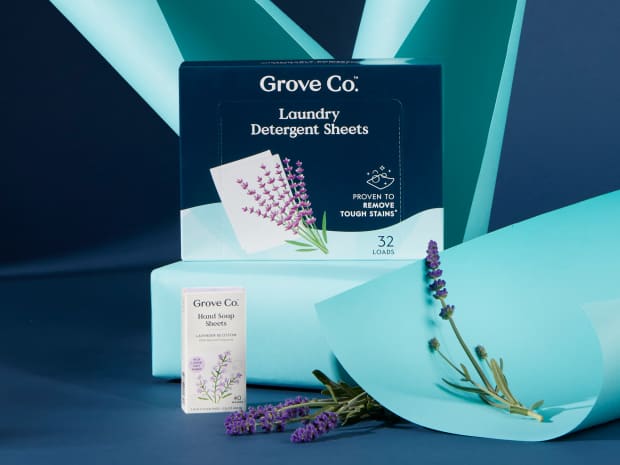
How do laundry detergent sheets work?
Learn about zero-waste laundry soap sheets from Lead Grove Guide Angela Bell.
Read More

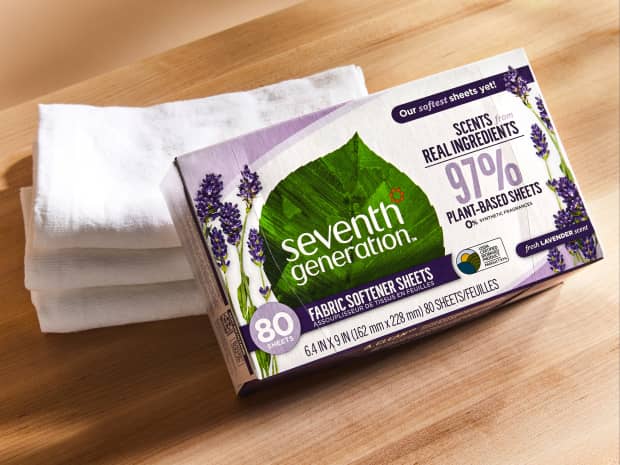
Last Updated: August 27, 2021
We tapped on Grove’s in-house experts to answer all your burning questions about dryer sheets, like: Why were they invented? What do they do? And, is there a better alternative?
The dryer sheet. The thing you’ve been tossing into your dryer for as long as you can remember to help “dry” your clothes. But did you ever stop and wonder, What do dryer sheets actually do? Or, Why were they invented?
Lucky for you, we called up Clement “Clem” Choy, Ph.D., Grove’s Senior Director of Science Formulation, to get the skinny on the dryer sheet, as well as some other ways to use them outside of doing laundry.
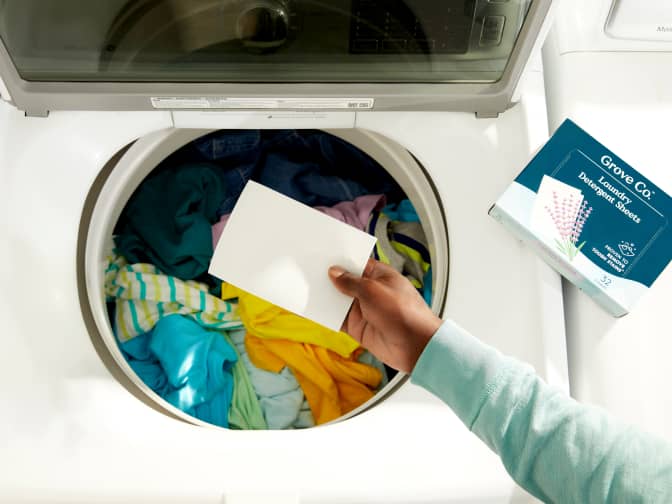
Clem Choy: A dryer sheet is a formulated fabric softener (or the active) on a sheet we call a substrate. The primary function of a dryer sheet is actually to remove static cling. So it's more like an anti-static force, first, and fabric softener, second.
You toss the dryer sheet into the dryer, and when it’s tumbling around, the active on the sheet transfers from the sheet onto the fabrics. Performance wise, it's very effective for static control, and adequate for softening.
Dryer sheets don’t have the same softening effect as a liquid fabric softener; so if you want your towels or clothes to really feel softer, you have to use a liquid fabric softener.
So the purpose of a dryer sheet is to:
GROVE TIP
CC: So in the winter time, you walk on carpets, especially in colder climates, and you have all this static shock. You touch the doors and get shocked.
If you throw a lot of synthetic fabrics in the dryer, everything is stuck together when you pull it out and you can hear it crackle. So dryer sheets were invented to help reduce static electricity and unexpected shocks.
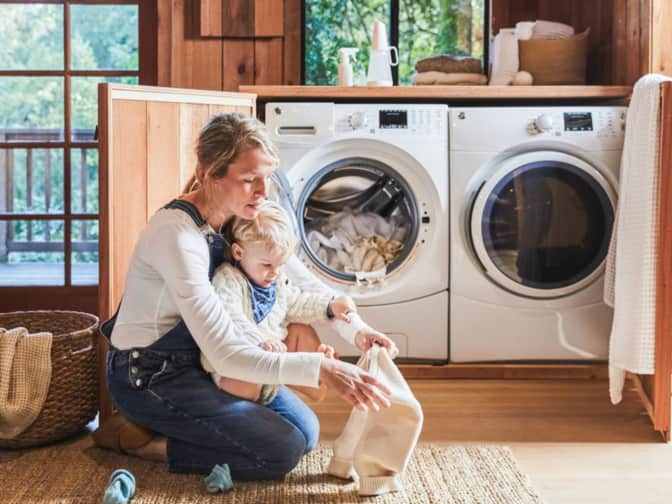
CC: The history is very interesting, actually. I was with the division that actually developed dryer sheets (Bounce was one of the first producers). It was kind of exciting because there were actually several issues in the beginning.
During the development we had to decide what active to use, and what the configuration of the sheet should be. One of the big problems in the beginning was that the sheet got stuck in the vent and would start dryer fires. So then they tried cutting slits in the sheet to help with air flow.
And then the other issue they had was the active on the dryer sheet actually softened the paint on the inside of the dryer. So at one time, we bought all different major brands of dryers, and we did testing with different formulas and made sure that it was compatible with all the different machine brands.
All these changes lead to improvement of not only the dryer sheet, but of dryer manufacturers. The design of the dryers has changed a lot over the time, because of the dryer sheet.
CC: The sheet itself, the conventional product, typically is a polyester. Some people consider polyester to be a type of plastic because it's synthetic, but the polyester used in a dryer sheet is almost the same kind of polyester that’s used to make your shirt.
In the last several years, though, there is a paper alternative. Roughly 10-15 years ago, companies like Seventh Generation and Mrs. Meyer’s started using paper as a substrate. So going from polyester to paper is a much more sustainable option.
And then there's another form that looks like polyester, but it's actually more like paper, and is 100% bio-based. This newer bio-based dryer sheet is what most green product manufacturers are using right now.
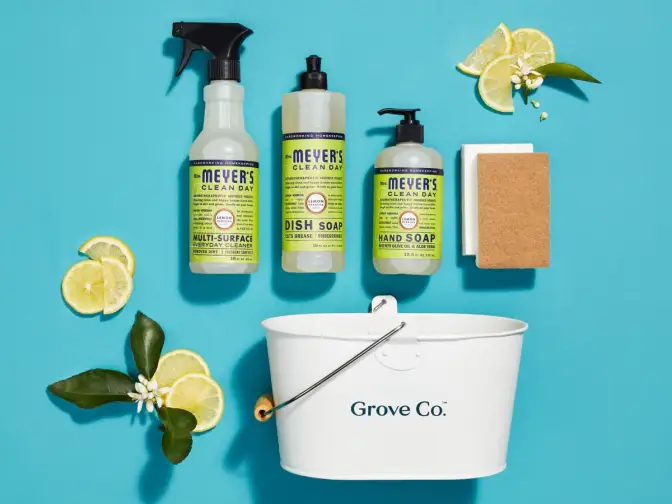
Wondering who Grove is, what types of products we offer, and how to get a free gift set when you sign up? Learn more about flexible monthly shipments, customizing your shipment, and joining millions of happy households — no monthly fees or commitments required.
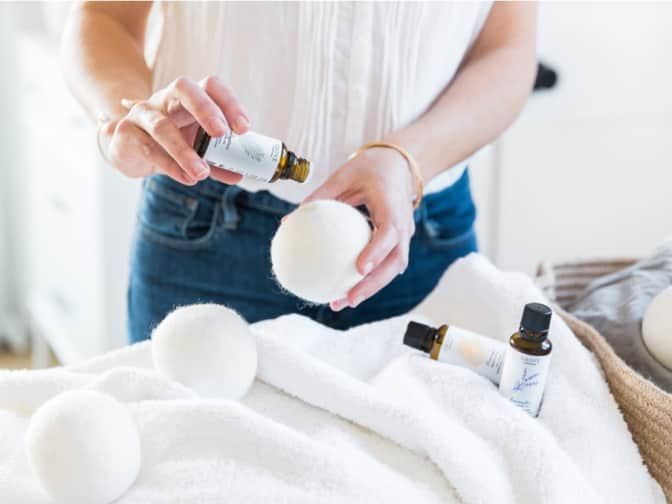
CC: Dryer balls are really the only alternative to dryer sheets on the market right now. Dryer balls do have some efficacy, but they really don’t have the same effect as a fabric softener like sheets.
What the dryer ball does is help with tumbling, and a little bit of static control. But the dryer ball does not have the same actives that are formulated for a dryer sheet.
CC: The active, in general, is what we will call a conditioning quat or QAC — a quaternary ammonium compound. It’s the same type of active used in liquid fabric softeners, but the quat/active is formulated so that instead of dispersing in water, it will melt off the sheet. So the temperature/heat of the dryer will cause the active to dissolve and the tumbling of the dryer will help the active rub into the fabric.
However, according to a 2020 study, “QACs have been previously detected in wastewater, surface waters, and sediments, and effects on antibiotic resistance have been explored.” It’s unknown the effects of these detections in our water and soil, but some scientists believe it could lead to antibiotic resistance and cause more problems down the line.
Dryer sheets may help keep static from your clothes, but they also work in some unusual ways as well. Have a look at ways you can clean with dryer sheets as well as some other uses below.
Thanks to its anti-static properties, dryer sheets work great at removing pet fur from clothes and upholstered furniture.
The next time your sink, faucet, tile, and shower door needs a good clean, skip the bleach and grab a dryer sheet to wipe up the grime. Lightly wet the sheet and scruba-dub-dub away that soap scum.
If taking off your shoes makes you wrinkle your nose, put a dryer sheet in your sneakers or boots to freshen things right up.
Learn the best ways to clean white shoes here.
When your hair feels a little electric, take a dryer sheet and give it a quick, couple of swipes over your head to tame those flyaways. Choose an unscented sheet that won’t clash with your deodorant or perfume.
White streaks on your shirt got you down? Grab an unscented dryer sheet and lightly rub or dab at those deo marks until they’re gone.
Learn other ways to get rid of stubborn deodorant stains here.
To keep insects from bugging you, tuck a few dryer sheets in your pocket or lightly rub it on your skin to keep those pesky skeeters away.
To keep delicate electronics shiny and dust free, swipe a dryer sheet across your screen to clean and cut through the static.
Instead of throwing away dull scissors, carefully rub a dryer sheet on the blade or cut through the sheet a few times. Those snips will sharpen up long enough for you to use before getting them professionally sharpened.
Before running the hose to give your car a bath, try dampening a dryer sheet and rubbing it over your windshield and grille to remove sticky bug guts, dirt, and pollen.
Stubborn stains on pots and pans are no joke, especially on those well-loved baking sheets.
Remove dark stains, spots, and food residue by filling your pot or pan with hot water and placing a dryer sheet in the middle to soak overnight (you can also add a squeeze of dish soap to the mix). The next day, dump out the water and scrub out the stains with the wet dryer sheet.

Learn about zero-waste laundry soap sheets from Lead Grove Guide Angela Bell.

Get the low-down on how to wash and dry your favorite garments with this guide.

Are wool dryer balls better than dryer sheets? Learn the basics about eco-friendly dryer balls.

Switching from warm to cold water can help save you money & reduce your carbon footprint.